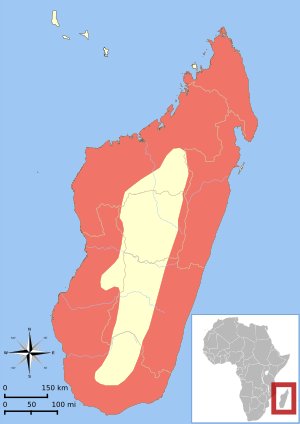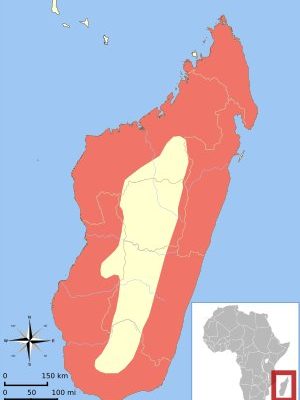
Fossas are a bit of a mystery, often overlooked despite their captivating behaviors. These animals are endemic to Madagascar, meaning they’re found nowhere else on the planet. So let’s dive deeper into their habitats, how their environment shapes their lives, and what it means for their future.
Fossa Habitats: The Heart of Madagascar
Fossas primarily inhabit the tropical rainforests of Madagascar, where the dense foliage provides both shelter and hunting grounds. These lush forests are teeming with life, creating a perfect backdrop for the fossa’s activities. You might picture the rainforest like a bustling marketplace, where various animals from colorful birds to playful lemurs coexist, each playing a role in the ecosystem.
The fossa’s habitat is not limited to just rainforests. They also thrive in spiny forests, dry deciduous forests, and even montane forests at higher elevations. Each environment offers different resources, from prey to shelter, allowing fossas to adapt and survive across diverse landscapes.
One of the coolest things about fossas is their ability to climb. With sharp claws and a long, agile body, they can navigate the treetops with ease. This climbing ability is crucial for hunting prey, which often includes lemurs. So, their living spaces aren’t just about finding a cozy spot to curl up; they’re about strategic hunting grounds, too.
The Distribution of Fossas: Where to Find Them
Now that we’ve covered the types of habitats fossas prefer, let’s explore their distribution across Madagascar. Fossas are typically found in various regions of the island, but they tend to favor areas where food is plentiful. You might be surprised to learn that they can adapt their range based on the availability of prey.
In the eastern rainforests, such as the Andasibe-Mantadia National Park, fossas find a rich supply of lemurs. Meanwhile, in the southern regions, like the Berenty Reserve, they’ve adapted to the dry forests, showing just how versatile these creatures can be. This adaptability is essential for their survival, especially in a world where habitats are changing rapidly.
Fossas have a wide range, with sightings reported across several national parks and reserves. However, they’re not evenly distributed. Some areas, especially those close to human settlements, see declining populations due to habitat loss and hunting. That’s why understanding where fossas live is critical for ongoing conservation efforts.
Why Habitat Matters for Fossas
You might be wondering why the specific type of habitat is so important to the fossa. The answer is all about survival. Each habitat provides essential resources—shelter, food, and breeding sites. For example, in tropical rainforests, the dense canopy offers cover from larger predators and a wealth of prey, while in drier regions, fossas learn to hunt in more open spaces.
Moreover, the health of these habitats directly influences fossa populations. Deforestation, climate change, and human encroachment all threaten their living spaces. When forests are cut down or degraded, fossas lose essential resources, putting their survival at risk. So, protecting the fossa’s habitat is crucial for their future.
Let’s not forget that these habitats are important for countless other species, too. By conserving the fossa’s environment, we’re helping to protect a whole ecosystem. It’s like tossing a pebble into a pond—the ripples affect everything around it.
Conservation Efforts for Fossas
As fascinating as fossas are, they face significant threats. Conservationists are working hard to protect their habitats and populations. Initiatives include creating protected areas and promoting sustainable land use to balance human needs with wildlife conservation.
You can support these efforts too! Spreading awareness about the challenges fossas face is a great start. Additionally, consider supporting organizations that focus on wildlife conservation. It might seem like a small action, but every bit helps.
By protecting the fossa, we’re also safeguarding the complex web of life in Madagascar’s unique ecosystems. It’s a practical example of how interconnected life is on our planet.
The Future of Fossas
So, what does the future hold for fossas? That largely depends on conservation efforts and the willingness of local communities to engage in protecting their environment. Education plays a critical role in this journey. When locals understand the ecological value of fossas and their habitats, they’re more likely to support conservation initiatives.
To keep these fascinating creatures thriving, it’s important for more research to be conducted on their behavior, population dynamics, and habitat requirements. This information can guide effective conservation strategies and help foster a sustainable balance between human activities and wildlife.
As we conclude, it’s evident that the fossa’s habitat and distribution are vital in understanding this unique species. The tropical rainforests and diverse ecosystems of Madagascar are not just home to the fossa—they’re essential to the intricate tapestry of life on the island. By focusing on habitat preservation, we can help ensure that these remarkable animals continue to thrive for generations to come. Let’s do our part to keep Madagascar’s magic alive!

